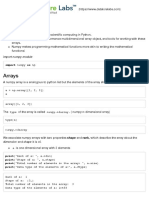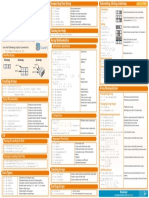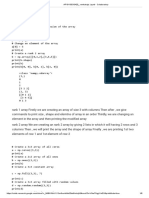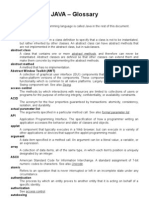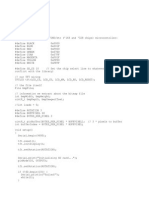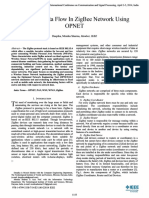0% found this document useful (0 votes)
85 views5 pagesNumPy Array Operations Guide
This document summarizes basic operations in NumPy like elementwise operations, comparisons, logical operations, reductions, broadcasting, and shape manipulation. It shows how to perform elementwise arithmetic, comparisons, logical operations on arrays. It also demonstrates summing arrays along axes, computing mins, maxes, broadcasting arithmetic across arrays of different shapes, and adding/removing axes to manipulate shapes.
Uploaded by
Varun AkuthotaCopyright
© © All Rights Reserved
We take content rights seriously. If you suspect this is your content, claim it here.
Available Formats
Download as DOCX, PDF, TXT or read online on Scribd
0% found this document useful (0 votes)
85 views5 pagesNumPy Array Operations Guide
This document summarizes basic operations in NumPy like elementwise operations, comparisons, logical operations, reductions, broadcasting, and shape manipulation. It shows how to perform elementwise arithmetic, comparisons, logical operations on arrays. It also demonstrates summing arrays along axes, computing mins, maxes, broadcasting arithmetic across arrays of different shapes, and adding/removing axes to manipulate shapes.
Uploaded by
Varun AkuthotaCopyright
© © All Rights Reserved
We take content rights seriously. If you suspect this is your content, claim it here.
Available Formats
Download as DOCX, PDF, TXT or read online on Scribd
/ 5













